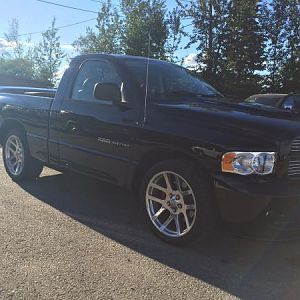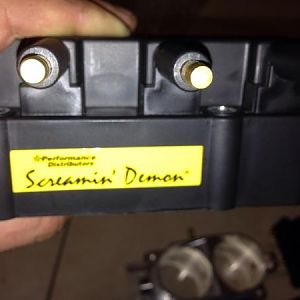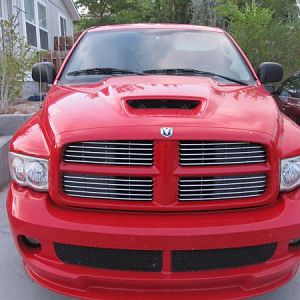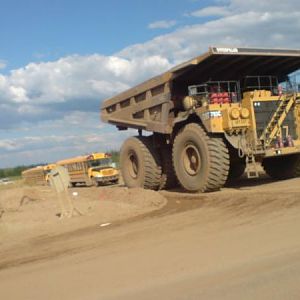(info from many different sites below)
Every engine has its own tastes.
If you evaporate 1 lb of water versus 1 lb of Meth, the water does cool the surface much more. However, Methanol has a much higher propensity to evaporate than water. So, you can evaporate it at a much higher rate, thus cooling much more.
http://www.landracing.com/index.php?option=com_content&task=view&id=68
What is Water/Methanol Injection?
Water Injection or Water Methanol Injection, is a process by which a mixture or water and Methanol are injected into the fuel/air mixture on the way to the combustion chamber. Water/Methanol Injection provides "Chemical Intercooling" inside the cylinder. By injecting water and methanol in a finely atomized spray, the water is able to evaporate under the high temps of a firing cylinder, and when the water evaporates, it takes heat with it. The methanol also has a cooling and octane boosting effect as it burns.
How does water/methanol injection allow your engine to produce more power?
The production of more power by a water/meth injected engine is not a by-product of the water/meth mixture alone. You must tune for it to get the most out of it. The evaporative effects of the water/meth mixture, plus the octane boost, allows you to run more advanced timing, and boost, thus increasing power. Methanol having the octane boosting effect, you can adjust your AFR's with tuning, and be able to run the same AFR as a pump gas tune with less fuel added to the fuel map of your engine managment. When the system is spraying, methanol is making up for the fuel that gets taken away during the tuning process. You end up with about same 12.5:1 or so AFR with less pump gas added, you also increase knock resistance, and due to the octane boosting effect, you can add timing and boost to make more power safely.
What is Methanol?
Methanol is the simplest alcohol compound, comprised of one carbon atom, one oxygen atom and four hydrogen atoms (CH3OH). It is also referred to as wood alcohol, carbinol and methyl alcohol. It is poisonous, flammable and relatively volatile. It has no taste or color, but it does have a slight scent.
Methanol is used as a fuel and an antifreeze, and to make formaldehyde. It is also added to ethanol to make it unpalatable so that it avoids taxes on drinkable alcohol, as ethanol without a denaturant of some sort is consumable by humans. Methanol was first discovered in 1661, though it had been used without isolation by peoples as far back as the Egyptians in their embalming processes. The name comes from methy, meaning wine, and hyle, meaning trees.
Methanol is used as a fuel source by some, though its use is limited by its volatility. The main area in which one sees methanol being used is in many top-end racing engines. The vehicles in the Indy 500, for example, are all run on methanol. This methanol is usually produced using a fossil fuel as the synthesis gas, either natural gas or petroleum.
Many renewable energy advocates see methanol as an ideal fuel source, with distinct advantages over hydrogen. When methanol is made from materials such as wood, it is often called bioalcohol. The theoretical use of methanol as a widespread fuel source has given rise to a theory describing what is known as the methanol economy.
In the methanol economy, the common fuel is methanol, with non-renewable fuels having a minority share or being entirely unused. George Olah, a winner of the Nobel Prize, is a strong advocate of this path. Advocates point out that in contrast to hydrogen, methanol is relatively cheap to produce, can be manufactured with little or no waste, is efficient to store and can be made from sources other than fossil fuels. Also, while conversion to a hydrogen economy would require major changes in infrastructure, methanol could be phased in relatively easily because of its interoperability with fossil fuels. One can mix methanol with gasoline to produce hybrid fuels while making the shift in economy.
Unfortunately, methanol is very toxic and contains a number of hazards. It is less volatile than hydrogen, but also much heavier, which could allow contamination in the case of spills or tank leaks. A wide range of groups are constantly looking for new and innovative uses for methanol, and it seems apparent that it will have a role in the energy economy of the future. Whether that role is as the key player or a supporter to hydrogen or some other fuel source remains to be seen.
Can you run just water injection without methanol?
Yes, but you will not be able to take advantage of the octane boosting properties of methanol, thus you will get cooling from the water, but no increase in octane. Without methanol, you may not make as much power, as it acts as a detonation inhibitor, and you may not be able to run a leaner AFR as you could with it.
What supporting upgrades are required for water/methanol injection?
At minimum you should have some sort of engine management that can be tuned, I.E. able to adjust timing, boost, and fuel curves, to compensate for the octane boost, and cooling effects, and be able to take advantage of them to make power. Otherwise you can run water/meth injection on a stock car with tunable engine management. You do not have to have after-market intakes, exhausts, intercoolers, or strengthened internals. Although with more supporting mods that already increase the volumetric efficiency of the engine, the more power that can be had.
Who makes Water/Methanol injection systems?
There are many manufactures of water/injection systems:
These are some of the more popular and most inclusive kits for the money
www.aquamist.co.uk
http://www.snowperformance.net/
www.coolingmist.com
www.alcohol-injection.com
www.enginerunup.com
www.fjoracing.com/products/waterinjection
www.smcenterprises.com/subaru.htm
Here is a link to details on companies:
http://forums.nasioc.com/forums/showthread.php?t=958501
Who is the best manufacture to go with?
That is up to debate, but when you choose a kit, look at all the components that come with the kit, or if you can buy extra pieces that you may need, or think you need I.E. Level switches, fail safes, extra nozzles, varible controllers.
Also consider what type of reservoir you are going to have to use, or does the kit include one?
Most companies have some sort of reservoir, some make you use the existing windshield wiper tank, or make you supply your own.
Also read other peoples experiences with different kits as far as setup, price, inclusiveness of kit (does it satisfy all your requirements part-wise), power gains, etc.
How do I know how big a nozzle to run?
Here is a water injection calculator to assist in this
Calculator
Another injection calculator
[/url]=http://www.alcohol-injection.com/for...read.php?t=351[/url]
It is at the bottom of the page...
Here is a volume converter also, to cross reference nozzles. Some companies list volumes of their nozzle in metric, some in standard units of measure.
http://www.sciencemadesimple.net/volume.php
Where can I get methanol?
One of the best sources that some probably don't realize is from wal-mart or anywhere that sells basic windshield wiper fluid. Just make sure you don't get the stuff with Glycol in it...this is the same stuff used in engine anti-freeze. It won't work well, or could damage you engine.
Other sources:
http://www.vpracingfuels.com/vp_01_f...55#special ty
This one has a comprihensive list of suppliers all over the USA
http://www.turbobuick.com/forums/sho...d.php?t=121500
You can buy on-line from these guys:
LINK
www.pricechemical.com/
www.powermist.com/distrib.html
www.worldwideracingfuels.com/catalog_c30755.html
Those are just some.
Are there any water injection forums I can learn more from?
Yes, here are a few:
Aquamist's, probably has the most info and activity
www.waterinjection.info/phpBB2/
www.waterinjectionforum.com
www.waterinjection.info
http://snowperformance.net/forum/
www.alcohol-injection.com/forum
How do I know what mixture to inject?
THe best rule of thumb is a 50/50 mix of methnol and distilled water
Some use more meth, some use less. But windshield wiper fluid is commonly between 35-42% methanol, which will usually work fine. The best mixture is proportionate to your particular state of tune. A little less methanol could possibly cause detonation. Mixing it yourself maybe the best way to know what is right for you.
Here is a freeze table for methanol also:
http://www.ashchem.com/adc/chemicals...=3&is_header=N
Just be careful with methanol as it is corrosive, toxic, and a carcinogen. Please be careful if you decide to mix your own brew.
Here is a link to a methanol hydrogemeter:
http://www.sjdiscounttools.com/ezrs104.html
Here is a great how to page:
http://www.dawesdevices.com/howto.html
Can you build your own kit, and how?
You need some basics to build your own system.
You need a pump with adequate pressure, most people use some type of diaphram pump, from ShurFlo for example.
You need nozzles
You need tubing
You need a trigger to turn on the system at the right time, some type of pressure switch...Some engine management such as TurboXS UTEC has a spare solenoid that can be setup to run your water injection system.
Many of the things needed for setting up a system can be found at these suppliers
http://www.grainger.com/Grainger/wwg...UseBVCookie=no
http://www.fastenal.com/web/products...l.ex?sku=68424
www.mcmaster.com/
And here is a great how to page on building your own...
http://www.projectwrx.com/modules.ph...howpage&pid=34
Can water/meth injection cause damage to my engine?
As with any aftermarket part, yes it can.
If you are running water/meth injection, you are risking detonation and catostrophic engine failure shoud you system fail or not run at optimum efficiency. This is due to the fact that when tuned you will be running advanced timing, boost and leaner fuel trims that would normally not be possible without water/meth injection. Loss of the system while under heavy load may not be able to be compensated for in time, and could cause detonation at best case, and engine failure at worst case. Be careful, and make sure you use a failsafe, or a tune that retards timing at the onset of knock, and some sort of level indicatior for the reservior, to ensure you know when the tank is getting empty. Nozzle clog indicators are not a bad idea either. They are especially important if using tap water, or not using a filter in the system, to catch impuritiies. This is why distilled water is best for this application.
Can I run without a external intercooler?
Yes, but your tune has to be setup to compesate for it. Advantages to running without a TMIC or FMIC are better spool of turbo and response, due to less volume to fill up. But again, you must make sure your system is working properly all the time, some have experimented with not using an external intercooler with success.
What gains can be made from water/meth injection?
This all depends on the current setup of your car, type of car, and your tuners ablilty. All your supporting mods such as exhaust, intakes, turbos gains are best realized with some sort of aftermarket tuning. The same it true with water/meth injection. But generally gains of 20-30 Hp and 20-30 ft/lbs of tq are common, making this one of the best bang for the buck power upgrades for your car. Your gains of course depend on supporting mods you already have in place, that will let you take advantage of the tuning to a higher degree.
Other NASIOC threads concerning water/meth injection:
LINK
LINK
LINK
LINK
LINK
LINK
LINK
Octane info and such...UPDATED
http://www.faqs.org/faqs/autos/gasoline-faq/part1/
http://en.wikipedia.org/wiki/Biobutanol
http://www.csgnetwork.com/octaneratecalc.html
Disclaimer:
I can not be held responsible to any damage or mis-forture that may befall you or your engine due to the ideas expressed in this thread. Everything that your try concerning water/methanol injection is done at your own risk.





